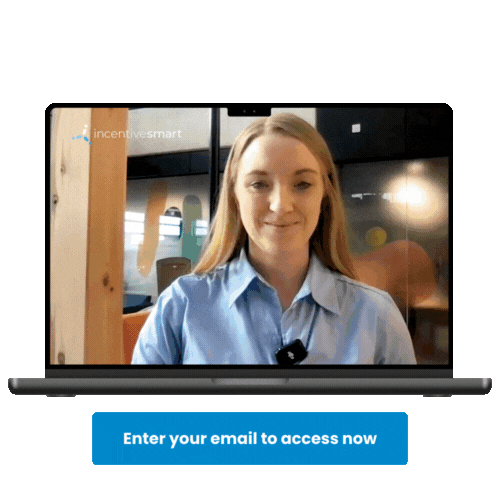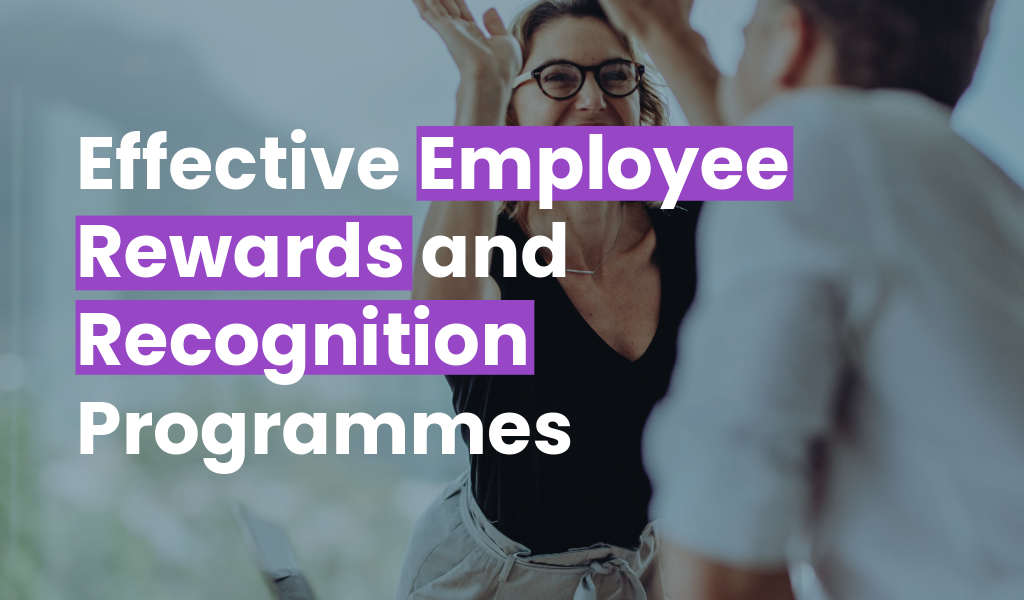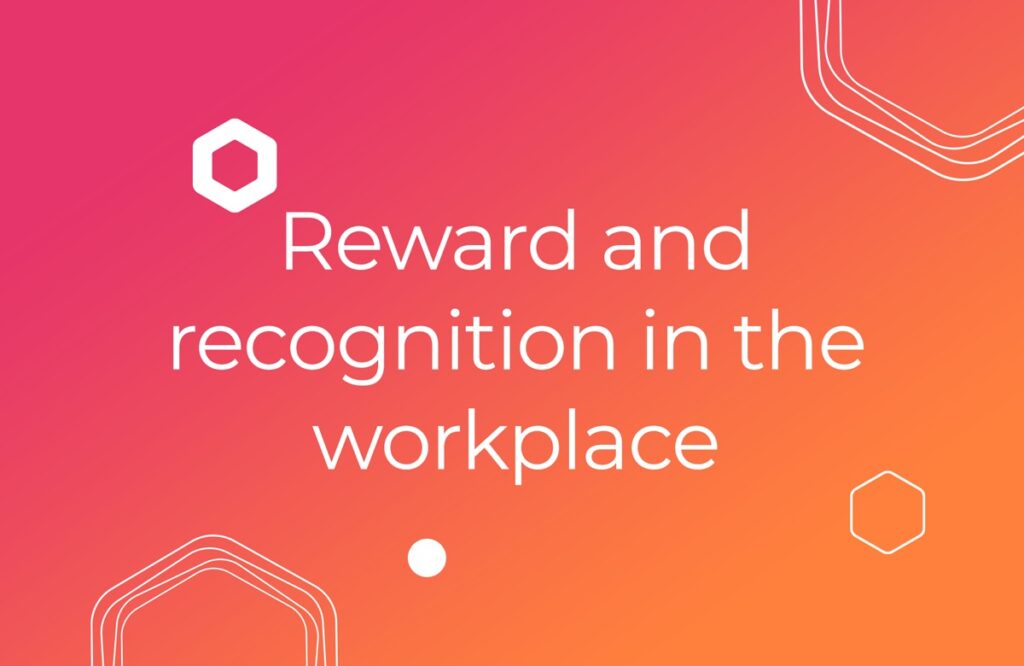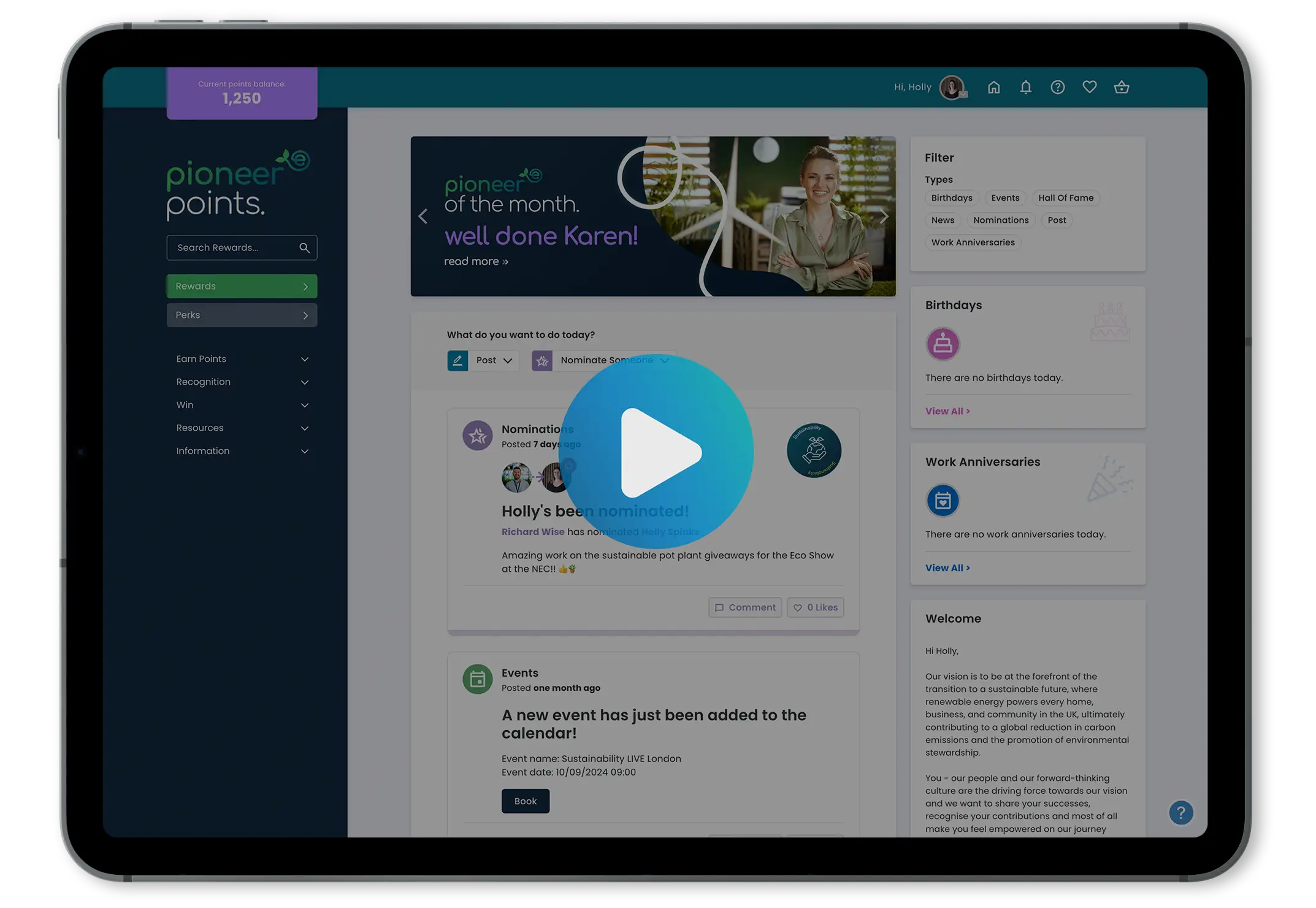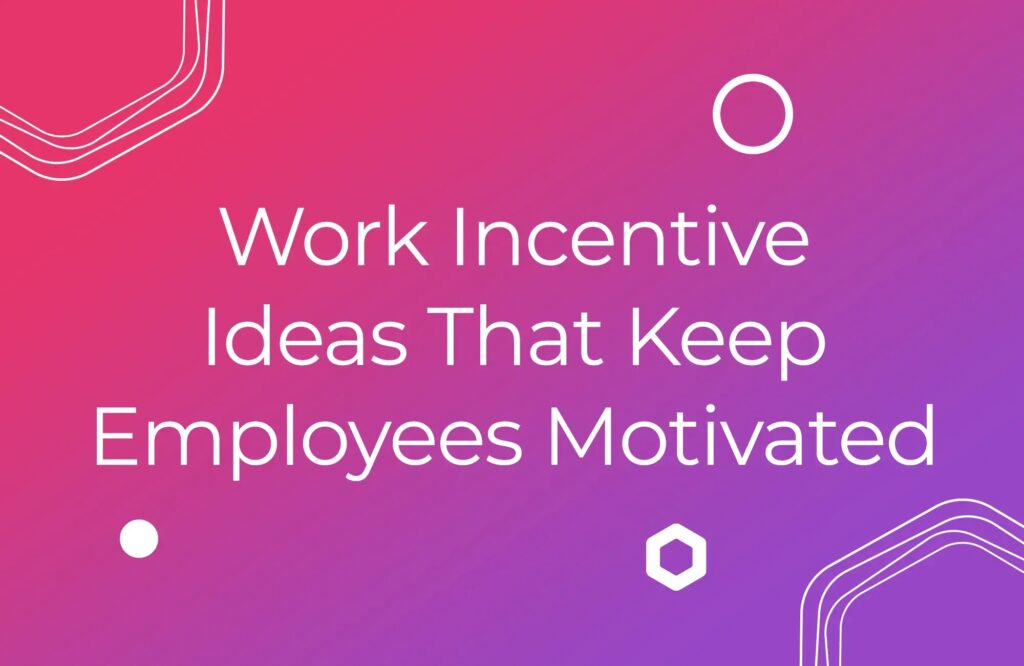


The work incentive ideas covered in this article play a pivotal role in boosting morale, enhancing job satisfaction and ultimately driving organisational success.
These workplace incentives can provide a motivational boost for employees whenever morale seems low. Helping managers, senior leadership teams and HR pros to drive top-notch levels of productivity year-round, whilst fostering a positive working culture.
They’re not the be-all and end-all engagement solution of course – for that you’ll need to combine intrinsic and extrinsic motivators – but they can spur teams into action in the short-term.
So, let’s explore what workplace incentives are and how you can use them to create a more engaged and dedicated team…
Skip to:
What are work incentives?
Work incentives are a range of rewards and motivational strategies organisations use to encourage employees to perform at their highest level and remain satisfied in their role.
These incentives can take various forms, including performance-based financial bonuses, recognition programmes and professional development opportunities.
Workplace incentives (done well) should align employees’ goals with those of the organisation.
This in turn will foster a motivated and committed workforce that’s heading in the same direction.
Incentives serve as tools to recognise and reward outstanding performance, thus reinforcing desired behaviours and outcomes to benefit the business’ growth and profitability.

Why are work incentives so important?
Incentives play a pivotal role in the workplace ecosystem, benefiting both employees and organisations in so many ways, including:
 Improving employee morale
Improving employee morale
Incentives validate employees’ efforts, fostering a sense of value, pride and belonging. Because, when employees feel appreciated, their morale soars and so too does their motivation to do an exceptional job as part of a wider team, leading to a more cohesive workplace culture.
A study found that 78% of employees report working harder and being more motivated when their efforts are recognized. This increased morale contributes to a more cohesive and collaborative workplace culture.
*Source: Bucketlist Rewards
 Increasing job satisfaction
Increasing job satisfaction
Work incentives that are tailored to recognise achievements and milestones amplify employees’ sense of fulfillment in their roles. This heightened satisfaction translates into higher productivity and a more committed workforce.
Employees who feel recognized and appreciated through tailored incentive programs are nearly six times less likely to look for a job elsewhere. This increased job satisfaction translates into a more committed and engaged.
*Source: Inspirus
 Reducing turnover
Reducing turnover
Effective incentive programmes significantly mitigate turnover rates. They achieve this by creating a supportive environment where employees feel valued and invested in the organisation’s success. Employees are then less inclined to seek opportunities elsewhere, improving retention rates.
Society for Human Resource Management (SHRM): A SHRM study found that companies offering robust incentive programs see a 28.6% lower voluntary turnover rate compared to companies without these programs.
 Enhancing productivity
Enhancing productivity
Motivated employees are inherently more productive and incentives are catalysts for enhanced performance. By setting clear goals and providing meaningful rewards for achieving them, employers encourage continuous improvement and empower employees to strive for excellence every day.
Gallup Report (2020): Gallup’s research shows that highly engaged employees are 21% more productive than their less engaged counterparts. Employee engagement, which is closely tied to motivation, directly influences productivity.
 Attracting top talent
Attracting top talent
Enticing incentive packages are a magnet for top-tier talent-seeking companies. With such a competitive job market to contend with, employers that can boast about robust incentives signal to potential hires that the organisation values its employees’ contributions and is committed to their professional success.
Research shows that 78% of employees consider attractive benefits and incentives a key factor when choosing a job.
*Source: Willis Towers Watson

Common (and effective) work incentive ideas
Work incentives can encompass a broad range of reward types, designed to motivate employees beyond their basic salary. Common types of work incentives include both financial rewards and non-financial perks…
Financial rewards
Annual salary raises
Annual salary raises are adjustments to employees’ base salaries, typically given on a yearly basis. These raises are tied to individual performance levels, reflecting the employee’s contributions and achievements throughout the year.
Spot awards
Spot awards are immediate, small-scale monetary rewards or gift cards given to individuals or teams to recognise exceptional performance on specific tasks or projects. These are typically granted on-the-spot or shortly after the accomplishment, reinforcing desired behaviours and demonstrating appreciation for outstanding efforts.
Profit-sharing
Profit-sharing programmes distribute a portion of the company’s profits among employees. By linking financial rewards to the overall performance and profitability of the organisation, profit-sharing aligns employees’ interests with the company’s success. This creates a sense of ownership and encourages employees to work collaboratively towards achieving shared goals.
Performance bonuses
These are typically used predominantly by sales teams as an annual or quarterly payment for achieving sales targets. But they needn’t be limited to sales alone. Every department should have the opportunity to earn based on exceptional performance. Companies simply need to establish the correct reward criteria for each role up front.
Referral bonuses
Referral bonuses incentivise employees to refer qualified candidates for open positions within the company. These bonuses vary in amount based on the difficulty and importance of the role being filled. In doing so, organisations tap into their existing talent pool to attract skilled individuals who are likely to contribute positively to the company’s objectives.
Stock options
Stock options offer employees the opportunity to purchase company shares at a discounted price within a specified timeframe. This not only provides employees with a potential financial benefit as the company grows but also aligns their interests with long-term company success. Stock options can incentivise employees to think strategically about the organisation’s future and make decisions that contribute to its growth and stability.

Non-financial rewards
Public acknowledgement
This form of recognition should be given to outstanding employees who have ‘lived’ company values. This can come via team get togethers, ‘shout-outs’ on social boards, email comms or at the summer party – it doesn’t really matter, as long as recognition is frequent and meaningful.
Sometimes recognition is accompanied by a small gift, sometimes not. But either way, public acknowledgement is key to breeding engagement.
Thank-you notes
Personalised thank-you notes, or one-to-one recognition in any form, remains a simple yet powerful way to show appreciation.
It demonstrates that someone took the time to acknowledge the employee’s efforts personally.
A well-crafted, truly thoughtful email or a message through the company’s intranet can be extremely effective, as long as it goes well beyond those standard – often throwaway – ‘thank yous’ we say off-the-cuff daily.
Be sure to include specific details about what the employee did well and how it benefited the team or company. Adding a personal touch makes the recognition more meaningful and heartfelt.
Special responsibilities
Special projects and responsibilities serve as powerful incentives for employees by offering opportunities for growth, recognition and alignment with their skills and interests.
These assignments provide employees with challenges that expand their capabilities, so it’s really a win-win.
Being selected for big projects demonstrates faith in their abilities and successful completion often leads to increased visibility within the organisation, opening doors for career advancement.
Travel and experiences
Recent studies have shown that employees have a clear favourite when it comes to incentives, and that’s travel-based rewards.
Travel offers something special that financial incentives can’t always match.
The excitement of planning a trip, the joy of discovering new destinations, the relaxation of taking a break from the daily grind and sharing that with family and colleagues is hard to beat. Which is why many companies still reward top-performing salespeople with high-end travel rewards.
But why limit that to just the sales team?
Every employee can excel in some way, and performance metrics should be in place for all – so why not open up the field to the wider employee-base too?
The best tech
Providing employees with the best technology as an incentive can significantly enhance their productivity, job satisfaction and overall engagement.
High-quality software and devices streamline workflows, reduce downtime and enable employees to work more efficiently. When employees have access to the latest technology, they can perform their tasks with greater ease and effectiveness, which can lead to higher-quality work and faster completion times. This not only benefits the employees by making their jobs more manageable but also benefits the company through improved performance and output.
Extra annual leave
Additional time off that’s earned by demonstrating company values can provide employees with much-needed rest and rejuvenation. This not only helps prevent burnout but also enables employees to return to work with a fresh perspective and renewed energy, which can lead to increased creativity and efficiency in their tasks.
Plus, it can significantly contribute to an employee’s well-being. It provides individuals with the opportunity to spend more time with family and friends and even pursue personal interests outside of their working life. This break from the routine can help employees manage stress better and maintain a healthier work-life balance.

Career development opportunities
Training opportunities
Providing robust access to diverse training programmes empowers employees to continuously acquire new skills and refine existing ones. These initiatives not only enhance job performance but also equip employees with the knowledge and expertise needed to excel in their current roles and prepare for future career advancements.
By investing in this area, companies demonstrate a steadfast commitment to fostering a skilled and adaptable workforce capable of meeting evolving business needs.
Mentorship programmes
Pairing employees with seasoned mentors cultivates a supportive environment where knowledge sharing and professional advice flourish. Mentorship programmes enable mentees to benefit from the wisdom and experience of their mentors, facilitating not only skill development but also broader career growth and personal enrichment.
Tuition reimbursement
Tuition reimbursement programmes encourage employees to pursue lifelong learning opportunities, thereby fostering a culture of continuous improvement and innovation within the workforce. Companies demonstrate a commitment to nurturing talent and preparing them for leadership roles and increased responsibilities within the company.

Morale-boosting ideas
Whilst the following are not incentives per say, they can help to build a community feel in the workplace.
Because a great working environment and supporting colleagues is a cornerstone to delivering great performance.
So why not consider…
Allowing staff to “fire” a client
If an employee has delivered exceptional work, let them “fire” a client they find challenging or drop a project that’s been a burden.
Of course, it’s important to approach this carefully—this doesn’t mean they’re in a position to tell the client what they really think of them; especially as it reflects on your business! However, depending on the circumstances, you can simply give them the option to step back from a specific project or client that they’re struggling with, so they can focus on tasks that they enjoy. Or call in additional support from experienced colleagues.
Themed dress-up days
Themed Dress-Up Days are a fun and engaging way to infuse some creativity and excitement into the workplace. On designated days, employees are encouraged to dress according to a pre-announced theme.
You could opt for the likes of “Superhero Day,” where everyone dons their favourite superhero costumes, or even “Decades Day,” which invites employees to dress in styles from different eras. Other popular themes might include “Pajama Day,” “Hawaiian Shirt Day,” or “Movie Character Day”.
By stepping away from the usual business attire, employees have the chance to showcase their personalities and interests in a fun and relaxed manner. Plus, it can help alleviate workplace stress and monotony, providing a much-needed mental break from the daily grind.
Bring your pet to work day
After a particularly hectic stretch where stress has been running high, why not set aside a day for employees to bring their pets to work?
Pets in the office can transform the environment into a warmer and more inviting space, helping to break down barriers and build a stronger sense of community. They act as natural icebreakers, sparking conversations and helping team members connect over their shared love for animals.
Having pets around can make employees feel more relaxed and balanced, which often leads to improved productivity and greater job satisfaction.
Plus, the chance to share their furry friends with colleagues can strengthen personal connections and foster a greater sense of inclusivity within the team.
Casual Fridays with ‘Happy Hour’
During particularly busy periods, employees often experience high levels of stress and burnout, making it crucial to offer opportunities for relaxation and downtime.
One effective way to help employees unwind and maintain their well-being is by introducing Casual Fridays with Happy Hour. This initiative provides a much-needed break, allowing employees to end the week on a positive and enjoyable note. Knowing that they have a fun and relaxing event to look forward to can boost morale and enhance job satisfaction.
As the workday concludes, the company hosts a happy hour, which can be hosted either in the office or at a nearby venue such as a local bar or restaurant. This social gathering provides employees with the chance to unwind, socialise, and enjoy some downtime with their colleagues.
Surprise snack cart
Why not give your employees a well-deserved treat during the work day with a surprise snack cart?
Periodically, a cart filled with an assortment of snacks and beverages makes its rounds through the office with a variety of goodies such as fresh fruits, gourmet cookies, granola bars, chips, nuts, etc.
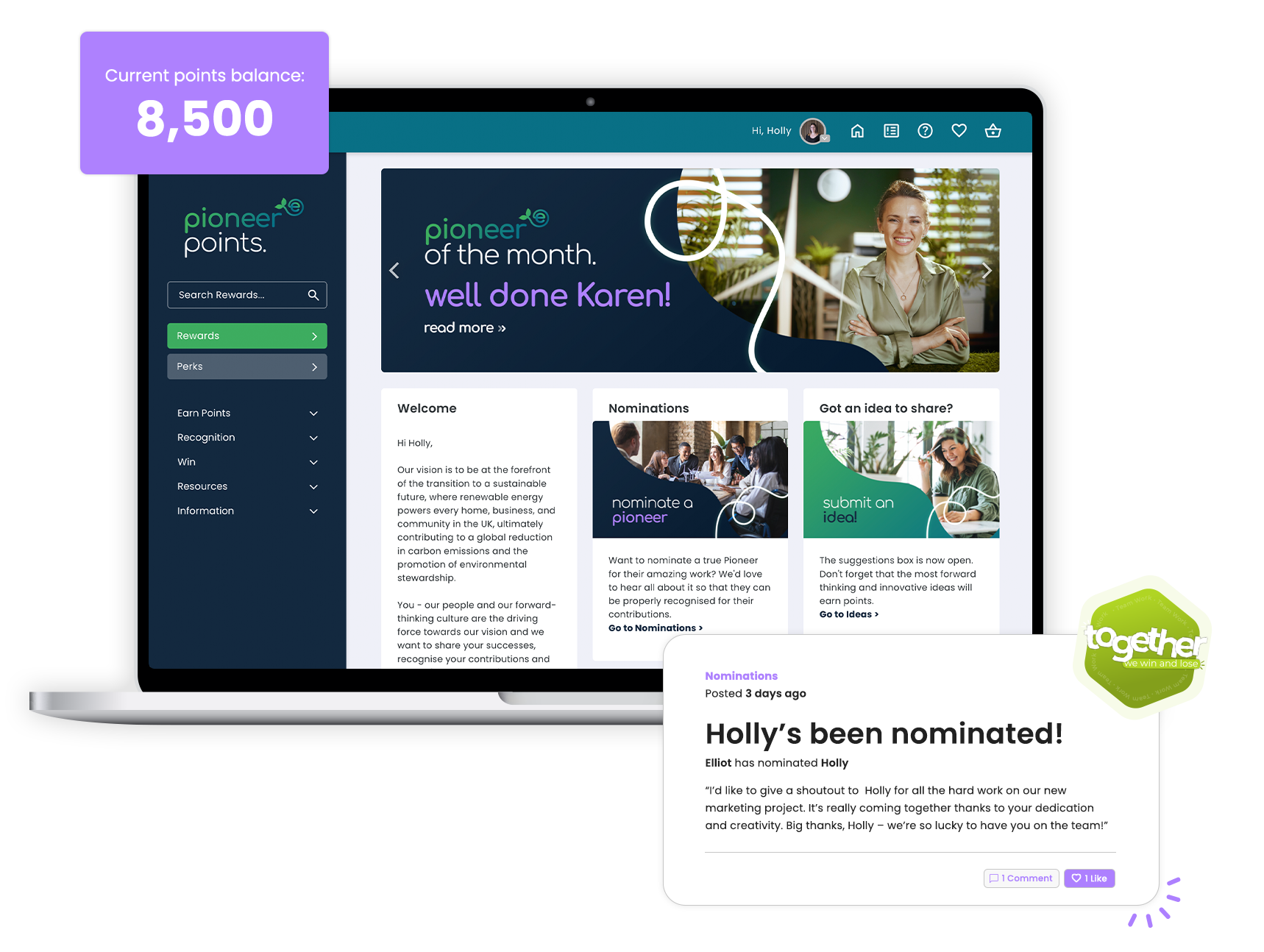
3 Top tips when implementing work incentives
- Companies should prioritise fairness and transparency in how incentive rewards are distributed. It’s crucial that employees perceive the process as equitable, where everyone has a clear understanding of how incentives are earned and allocated.
- Programmes should be practical to implement and maintain over the long term, without placing undue strain on resources or operations.
- Clear communication about the incentives, their objectives and the criteria for earning them is essential for ensuring that employees are motivated and engaged.
Partner with Incentivesmart to get your workplace incentives up and running
With our expertise in designing comprehensive incentive strategies, we help you foster a culture where employees feel valued and motivated to excel.
Whether you’re looking to enhance performance through innovative rewards and streamline operations with efficient incentive management, Incentivesmart provides the tools and expertise you need to achieve your goals. Get in touch with us today to create a winning incentives programme for your team.



![*FREE GUIDE* How to implement a fantastic company culture in 6 steps Enter your business email for instant access. {{ include_custom_fonts({"Poppins":["Semi Bold"]}) }}](https://no-cache.hubspot.com/cta/default/5921162/interactive-188034983837.png)

